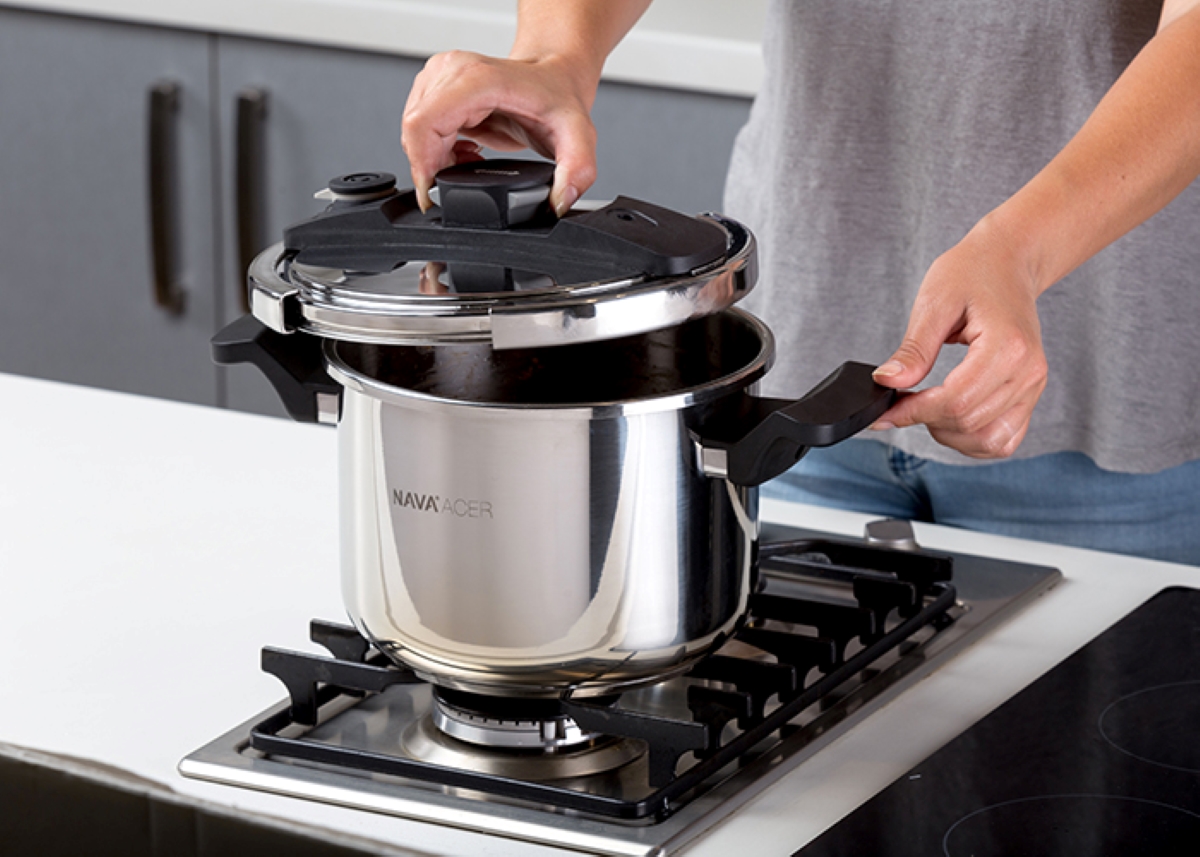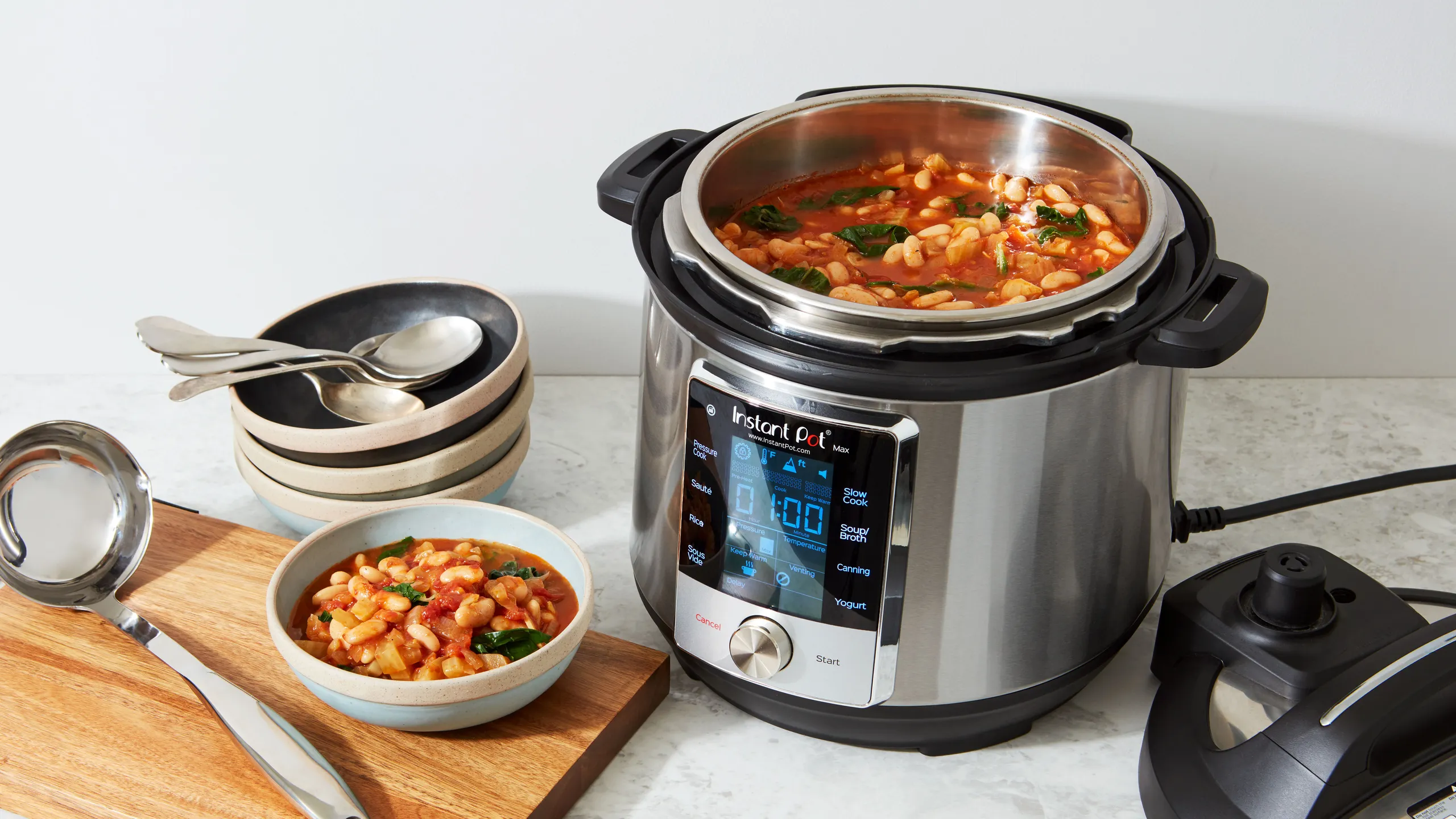So, you’ve got a pressure cooker. Maybe it’s a shiny new electric model fresh out of the box, or perhaps it’s a trusty stovetop version you inherited from your grandmother. Whatever its origin, there’s often a moment of hesitation before that first use. You might be wondering, “Is this thing actually safe?” Learning How To Test If Your Pressure Cooker Is Working is the single most important step you can take, not just for delicious meals, but for total peace of mind in the kitchen. It’s a simple process that separates a confident cook from a nervous novice.
I remember my first time. I stared at my new electric pressure cooker like it was a mysterious spaceship. The hissing, the steam, the locking lid—it was all a bit intimidating. But once I ran a simple water test, all that anxiety vanished. It demystified the machine and showed me it was just a tool, a brilliant one at that, designed with multiple safety features. This guide will walk you through that same confidence-building process.
Why You Absolutely Should Test Your Pressure Cooker
Think of it like this: you wouldn’t drive a car without knowing the brakes work, right? Testing your pressure cooker is the same principle. It’s a quick, non-negotiable check-up that ensures everything is in tip-top shape before you entrust it with your dinner.
This initial test, often called the “water test,” serves three crucial purposes:
- Safety First: It confirms that all safety mechanisms, like the lid lock and pressure valves, are functioning correctly.
- Performance Check: It ensures the cooker can actually reach and maintain pressure, which is essential for cooking food properly and efficiently.
- Familiarity: It’s a low-stakes way to get comfortable with your cooker’s sounds and signals without the risk of ruining a meal.
The Water Test: Your Step-by-Step Guide
The water test is the gold standard for checking your pressure cooker’s functionality. It mimics the cooking process without any food involved. The steps are slightly different for electric and stovetop models, so find your type below.
For Electric Pressure Cookers (e.g., Instant Pot)
Electric pressure cookers are designed to be mostly hands-off, and their test is just as simple.
- Inspect the Parts: Before you even add water, give your machine a quick once-over. Is the inner pot seated correctly? Is the silicone sealing ring (the gasket) firmly in place inside the lid?
- Add Water: Pour 2-3 cups of cold water into the inner pot. This is enough to generate steam without taking forever to heat up.
- Lock the Lid: Place the lid on top and turn it until you hear the familiar jingle or feel it lock into place.
- Set the Steam Valve: Turn the steam release valve to the “Sealing” position. This is a critical step; if it’s on “Venting,” it will never build pressure.
- Start the Cooker: Plug in the unit and select the “Pressure Cook” or “Manual” setting. Set the timer for 2 minutes. The cooker will now begin heating the water.
- Watch and Wait: As the water heats, you’ll see the float valve (a small metal pin) rise up and click into place. This is the sound of success! It means the pot is now sealed and pressure is building. You might see a little steam sputter from the float valve area right before it seals—that’s completely normal.
- The Test Release: Once the 2-minute timer beeps, your test is complete. Now, you’ll test the pressure release. Carefully use a long-handled spoon to turn the steam release valve to the “Venting” position. Stand back! A powerful jet of steam will shoot out. Once the steam stops and the float valve drops back down, it is safe to open the lid.
Congratulations! Your electric pressure cooker passed with flying colors.
For Stovetop Pressure Cookers
Stovetop models require a little more attention, but the principle is the same.
- Visual Inspection: Just like with the electric model, check your gasket to ensure it’s not cracked or brittle. Make sure the pressure regulator or weighted jiggler is clean.
- Add Water: Pour about 2-3 cups of water into the pot.
- Seal the Deal: Securely lock the lid according to your manufacturer’s instructions.
- Heat It Up: Place the cooker on your stove over high heat.
- Listen for the Signs: As it heats, the pressure indicator pin (if your model has one) will rise. Soon after, the pressure regulator will start to jiggle, rock, or release steady hisses of steam. This is the sound you want to hear! It means the cooker has reached its target pressure (usually 15 PSI).
- Adjust the Heat: Once it reaches pressure, lower the stove heat to the minimum level required to maintain that gentle jiggling or hissing. You don’t need it blasting on high the whole time. Let it maintain pressure for 5 minutes.
- Release the Pressure: After 5 minutes, turn off the heat. You can either let it cool down on its own (natural release) or, for the test, use the quick release method. This might involve running cool water over the lid (check your manual!) or using a built-in release switch.
If your stovetop cooker sealed, reached pressure, and maintained it, you’re ready to cook.
Beyond the Test: A Pre-Use Safety Checklist
Knowing how to test if your pressure cooker is working is fantastic, but a quick visual inspection before every use is just as important. Make this a habit.
- The Gasket (Sealing Ring): This is the hero of your pressure cooker. It creates the airtight seal. Check it for cracks, tears, or stiffness. If it feels hard or doesn’t fit snugly, it’s time for a replacement. A faulty gasket is the #1 reason for a pressure cooker failing to seal.
- The Valves and Vents: Hold the lid up to a light. Can you see through the steam vent and safety valve openings? They can get clogged with tiny food particles. A toothpick or the small cleaning tool that came with your cooker can clear any blockages.
- The Locking Mechanism: Make sure the lid locks smoothly and securely onto the pot base.
- The Inner Pot: Check for any major dents or warping, especially on the rim. A bent rim can prevent a proper seal.

Expert Tip: Chef Isabella Rossi, a culinary equipment specialist, advises, “Treat your silicone gasket with care. Wash it with gentle soap after each use and store the lid upside down on the pot. This prevents it from absorbing odors and lets it air out, prolonging its life.”
Common Problems and What They Mean
What if your test doesn’t go as planned? Don’t panic. Here are the most common issues and their likely causes.
| Problem | Possible Cause | Solution |
|---|---|---|
| Steam is leaking from the sides of the lid. | The gasket isn’t seated properly, is dirty, or is worn out. | Open the lid, remove the gasket, clean it, and reseat it firmly. If it’s old, replace it. |
| The float valve won’t pop up (electric models). | Not enough liquid in the pot, or the steam release valve is set to “Venting”. | Ensure you have at least 1 cup of liquid. Double-check that the valve is in the “Sealing” position. |
| It takes a very long time to build pressure. | The heat source is too low (stovetop) or there is a small, slow leak. | Increase the stove heat. Check the gasket for a perfect seal. |
| The pressure indicator never shows pressure (stovetop). | The heat is too low, or there is a significant leak somewhere. | Check all seals and valves again. Make sure the stove is on high heat initially. |
Frequently Asked Questions (FAQ)
How often should I test my pressure cooker?
You should always perform the water test when your cooker is brand new. After that, doing it once a year or whenever you haven’t used it for several months is a good practice to ensure it’s still in working order.
Why is my new pressure cooker smelling like plastic during the test?
This is very common with new appliances. It’s usually the smell of manufacturing residues burning off the heating element or the silicone gasket off-gassing. The initial water test is a perfect way to burn this off so it doesn’t affect the taste of your first meal.
Can I test my pressure cooker with food inside?
The initial, out-of-the-box test should always be done with only water. This isolates the machine’s performance without variables like food type or volume. Once you’ve confirmed it works, you’re ready to cook with it.
What should I do if my pressure cooker fails the water test?
First, run through the troubleshooting checklist above. The issue is almost always a simple fix, like a misplaced gasket. If you’ve tried everything and it still won’t seal or build pressure, consult your user manual and contact the manufacturer’s customer support. Do not use a pressure cooker you believe to be faulty.
Is it normal for some steam to escape before it seals?
Yes, absolutely. For both electric and stovetop models, a small amount of steam will escape from the valves before they seal and lock. This is part of the process of pushing out air to create a pure steam environment. Once the pin pops or the regulator starts jiggling, the hissing should stop.
Your Kitchen’s New Best Friend
A pressure cooker isn’t just a pot; it’s a time machine. It can turn tough cuts of meat into tender, fall-off-the-bone marvels in under an hour. It can cook beans from scratch in minutes, not hours. It saves time, energy, and locks in nutrients. By taking a few moments to understand how to test if your pressure cooker is working, you’re not just ensuring safety—you’re unlocking a world of fast, flavorful, and effortless cooking. Now that you’ve passed the test, it’s time for the fun part: deciding what delicious meal to make first.
